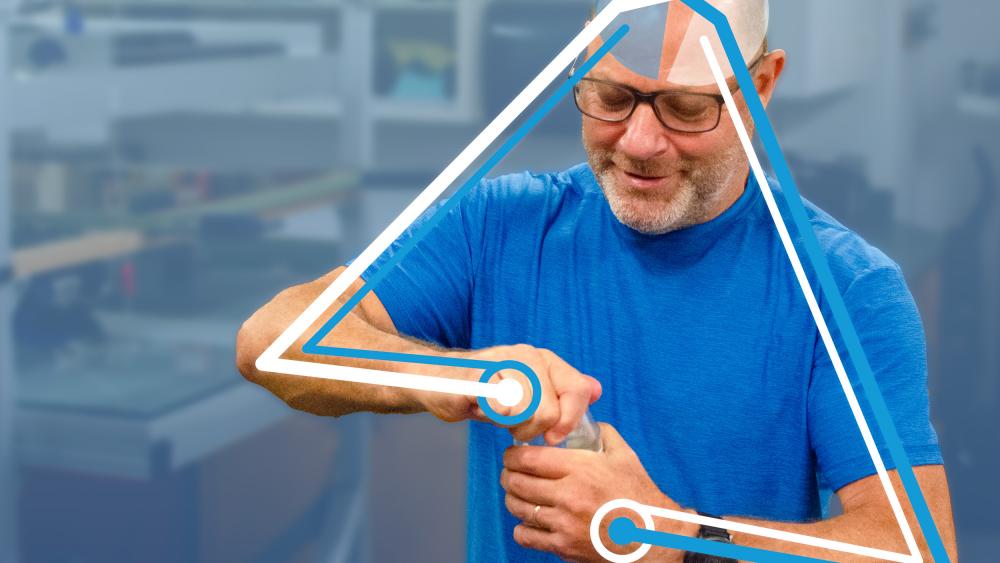Fitness
Alternative understanding of brain leads to new treatments for stroke patients | Penn State University

“Approximately 50% to 70% of people who experience a stroke survive, but many of those survivors have a long-term disability,” Sainburg said. “That means there are hundreds of thousands of people each year in the United States alone who could benefit directly from this research and other studies that improve rehabilitation for stroke survivors.”
Strokes occur when there is an interruption of blood flow to the brain, either due to a blockage or burst blood vessel. A stroke can damage parts of the brain that control movement and disrupt communication between the brain and muscles.
Much of the evidence to support left- or right-brain dominance, according to the researchers, comes from studying strokes. If someone has a large stroke in the movement center on one side of their brain, the other side of the body commonly displays significant control problems and can become weakened or paralyzed. The same side of the body may exhibit weakness or other issues, but the assumption previously existed that the same side was unaffected.
This assumption meant that the standard course of physical rehabilitation for stroke patients has been to improve function on the side of the body most affected by the stroke, according to Sainburg. Once that side became as capable as possible, people were taught to compensate for lost function with the less affected side of the body. Research by Sainburg and others, however, demonstrated that both sides of the body can be affected by a significant stroke.
“When I started this work in the 1990s, colleagues literally told me that I was throwing my career away pursuing this idea,” Sainburg said. “In their minds, it was settled science that each side of the body was controlled by the opposite brain hemisphere. Today, acceptance is rapidly emerging among neuroscientists and clinicians who work with stroke patients that both sides of the brain affect movement on both sides of the body. Currently, our research is exploring the full clinical implications of this knowledge.”
Despite initial hesitancy from the field, over the past five years, Sainburg and his co-authors found that these ideas have started to become applied more broadly. Many laboratories have now published articles that described deficits in the ipsilesional — or so-called “good” — arm following a stroke. Some of these studies also examined how to rehabilitate these deficits.
Now, the team is analyzing data from a large-scale clinical trial they conducted from 2018 to 2024, testing the effectiveness of therapies informed by their initial research for people who have experienced strokes in a single hemisphere of their brain. Preliminary results are promising, the researchers said.
Understanding the importance of each hemisphere
Around 20 years ago, before the complimentary dominance hypothesis — initially referred to as the dynamic dominance hypothesis — was more widely understood and accepted, Sainburg and his collaborators employed techniques from neuroscience and biomechanics to investigate the relationship between the brain and body.
“The idea that there was a ‘good’ side and a ‘bad’ side in a healthy brain — rather than two sides doing different things — seemed absurd to me,” Sainburg said. “We know that in language production, the left side of the brain handles syntax and word choice, and the right side of the brain processes intonation for emotional expression. We believed something analogous must be happening in movement.”
Sainburg and his colleagues examined whether a person’s non-dominant arm and hand are better at some tasks or elements of tasks than the dominant arm. Their research demonstrated that the dominant hemisphere of the brain — the left hemisphere in right-handed people — was better at smooth, accurate and efficient limb movements. Their research also demonstrated that the non-dominant, right hemisphere of the brain was better at stabilizing the left arm in unpredictable situations, like if a person is pushed without warning. Central to the hypothesis is the idea that both arms access both sides of the brain. Both sides use the same control systems, but each side relies more heavily on the specialization of the opposite side brain hemisphere — the one more closely connected to control of that limb.










